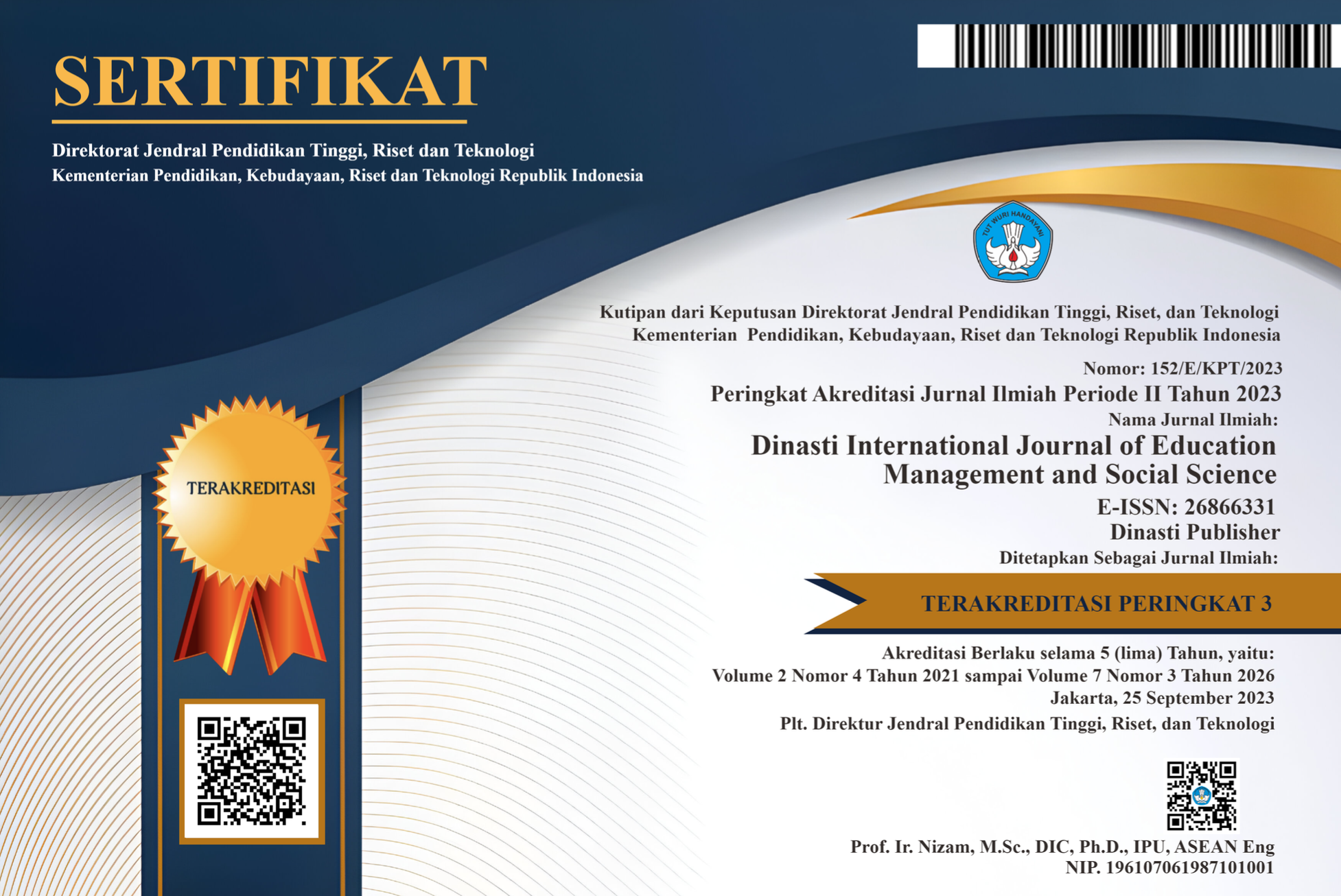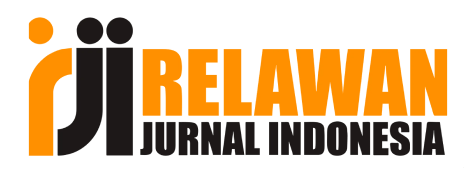Promoting Semanggi Surabaya as an Icon and Tourist Attraction of Surabaya City
DOI:
https://doi.org/10.31933/dijemss.v5i4.2697Keywords:
Clover, Icon, Tourist AttractionAbstract
The purpose of this research is to promoting Semanggi Surabaya as an icon and tourist attraction in the city of Surabaya. The research design is a case study. Data collection techniques include observation, interviews, and documentation. Data analysis is conducted using the Miles Huberman method. Promoting Semanggi Surabaya as an icon and tourist attraction in the city of Surabaya signifies an effort to enrich its cultural identity. By highlighting the beauty and uniqueness of clover as a symbol representing fertility, peace, and luck, Surabaya expands the awareness of tourists regarding its hidden natural tourism potential. This initiative not only promotes the beauty of the local nature but also strengthens the local community's pride in their cultural heritage. The conclusion emphasizes the importance of preserving and promoting local cultural elements as a strategy to enhance the tourism industry of a city while fostering awareness of the significance of environmental preservation and cultural identity in the rapidly advancing context of globalization.
References
Akwila, T., Nurmanto, V. C., & Parantika, A. (2023). Wisata Gastronomi Sebagai Daya Tarik Destinasi di Surabaya. Jurnal Ilmiah Wahana Pendidikan, 9(7), 467–476. https://doi.org/10.5281/zenodo.7826868
Andriani, D. R. (2015). TA: Rebranding Kebun Binatang Surabaya Dengan Menggunakan Karakteristik Berbasis Budaya Lokal. Institut Bisnis dan Informatika Stikom Surabaya.
Anisawati, E., Atika, F. A., & Rachim, A. M. (2022). Desain Fasilitas Pecinta Kuliner Di Surabaya Dengan Pendekatan Tema Arsitektur Vernakular. Jurnal Lingkungan Karya Arsitektur (LingKAr), 1(2), 72–83. https://doi.org/10.37477/lkr.v%vi%i.337
Ardira, M. A., Nugraha, R. N., & Susilo, P. Y. (2024). Identification of Bogor City Square Tourist Attraction Facilities As An Indikator Of Visitor Satisfaction. West Science Social and Humanities Studies, 2(04), 672–682. https://doi.org/10.58812/wsshs.v2i04.853
Cahyani, F. A., Al Lukman, L., Lestari, D. W., Janah, A. N., & Trimah, S. (2023). The Influence of Tourist Attraction and Service Quality on the Interest of Visiting Tourists on Tkl Ecopark. Journal Of Humanities, Social Sciences and Business, 2(2), 401–408. https://doi.org/10.55047/jhssb.v2i2.503
Cunha, C., Kastenholz, E., & Carneiro, M. J. (2020). Entrepreneurs in rural tourism: Do lifestyle motivations contribute to management practices that enhance sustainable entrepreneurial ecosystems? Journal of Hospitality and Tourism Management, 44, 215–226. https://doi.org/10.1016/j.jhtm.2020.06.007
Efendi, M. N., Paturusi, S. A., Wiranatha, A. S., & Suryawardani, I. (2019). Assessment and prioritization of urban tourist attractions in Kota Lama Tourism Area Surabaya, Indonesia. Journal of Tourism and Hospitality Management, 7(1), 212–218. https://doi.org/10.15640/jthm.v7n1a20
Faizza, E. (2017). Brand Strategy Jawa Timur di Mata Internal Stakeholder dalam Upaya Membangun Province Branding Jawa Timur. Universitas Airlangga.
Ferreira, J., Sousa, B. M., & Gonçalves, F. (2019). Encouraging the subsistence artisan entrepreneurship in handicraft and creative contexts. Journal of Enterprising Communities: People and Places in the Global Economy, 13(1/2), 64–83. https://doi.org/10.1108/JEC-09-2018-0068
Hillman, P., Moyle, B. D., & Weiler, B. (2017). Perceptions of impacts and development in a cultural tourism hub: Ubud, Bali. Balancing Development and Sustainability in Tourism Destinations: Proceedings of the Tourism Outlook Conference 2015, 57–66. https://doi.org/10.1007/978-981-10-1718-6_7
Istighfaria, K. W., & Tutuko, D. (2017). Visualisasi Penjual Semanggi Surabaya Dalam Bentuk Karya Tari Kendung Semangi. 7(2), 136–149.
Kurniasari, A. T. (2014). TA: Perancangan Media Iklan Batik Surabaya Sebagai Upaya Memperkenalkan Produk Budaya Lokal. Institut Bisnis dan Informatika Stikom Surabaya.
Lestari, N. S., & Pratami, K. E. N. (2018). Ayam Ingkung sebagai Pelengkap Upacara Adat di Bantul Yogyakarta. Jurnal Sains Terapan Pariwisata, 3(3), 306–320.
Maghfirotunnisa, M., Al Baihaqi, A. R., & Hikmah, M. F. (2023). Strategi Pemasaran Sate Karak Di Wisata Religi Makam Sunan Ampel Surabaya. Jurnal Pariwisata Bisnis Digital Dan Manajemen, 2(2), 73–81. https://doi.org/10.33480/jasdim.v2i2.4205
Mardhiyah, H. (2014). Ngarsopuro sebagai ruang publik (Studi Kasus Tentang Ngarsopuro Sebagai Ruang Publik).
Riduwan, K. A., & Ariyanto, A. F. (2019). Perancangan Interior Islamic Health And Sports Dengan Tema Semanggi Di Kota Surabaya. Texture: Art and Culture Journal, 2(2), 137–157. https://doi.org/10.33153/texture.v2i2.2787
Sari, K. A. (2014). Kapasitas PKL Galabo Dalam Pengembangan Kawasan Wisata Kuliner Di Surakarta. Fisipol UGM Jurusan S-1 Sosiologi.
Sulistiyowati, L. H., Fatimah, S. E., Komara, A., Mahadianto, M. Y., Saha, S., & Rahmatika, D. N. (2024). Turtle Conservation Campaign As A Tourist Attraction For Bali. Journal of Sustainable Community Service, 4(2), 128–134. https://doi.org/10.55047/jscs.v4i2.572
Wahyudiono, W., & Susanto, S. (2017). MANAJEMEN UMKM: Meningkatkan Daya Saing Berbasis Kearifan Lokal. Narotama University Press.
Wijaya, L. S., Kristianto, B., Vanel, Z., & Huwae, G. N. (2020). Pengembangan Model Strategi Integrated Marketing Communication (IMC) Dalam Upaya Meningkatkan City Image (Studi Kasus Pemerintah Kota Surakarta-Jawa Tengah). Jurnal Ilmiah Media, Public Relations, Dan Komunikasi (IMPRESI), 1(1), 12–22. https://doi.org/10.20961/impresi.v1i1.41343
Downloads
Published
How to Cite
Issue
Section
License
Copyright (c) 2024 Bawa Mulyono Hadi

This work is licensed under a Creative Commons Attribution 4.0 International License.
Authors who publish their manuscripts in this journal agree to the following conditions:
- The copyright on each article belongs to the author(s).
- The author acknowledges that the Dinasti International Journal of Education Management and Social Science (DIJEMSS) has the right to be the first to publish with a Creative Commons Attribution 4.0 International license (Attribution 4.0 International (CC BY 4.0).
- Authors can submit articles separately, arrange for the non-exclusive distribution of manuscripts that have been published in this journal into other versions (e.g., sent to the author's institutional repository, publication into books, etc.), by acknowledging that the manuscript has been published for the first time in the Dinasti International Journal of Education Management and Social Science (DIJEMSS).















































